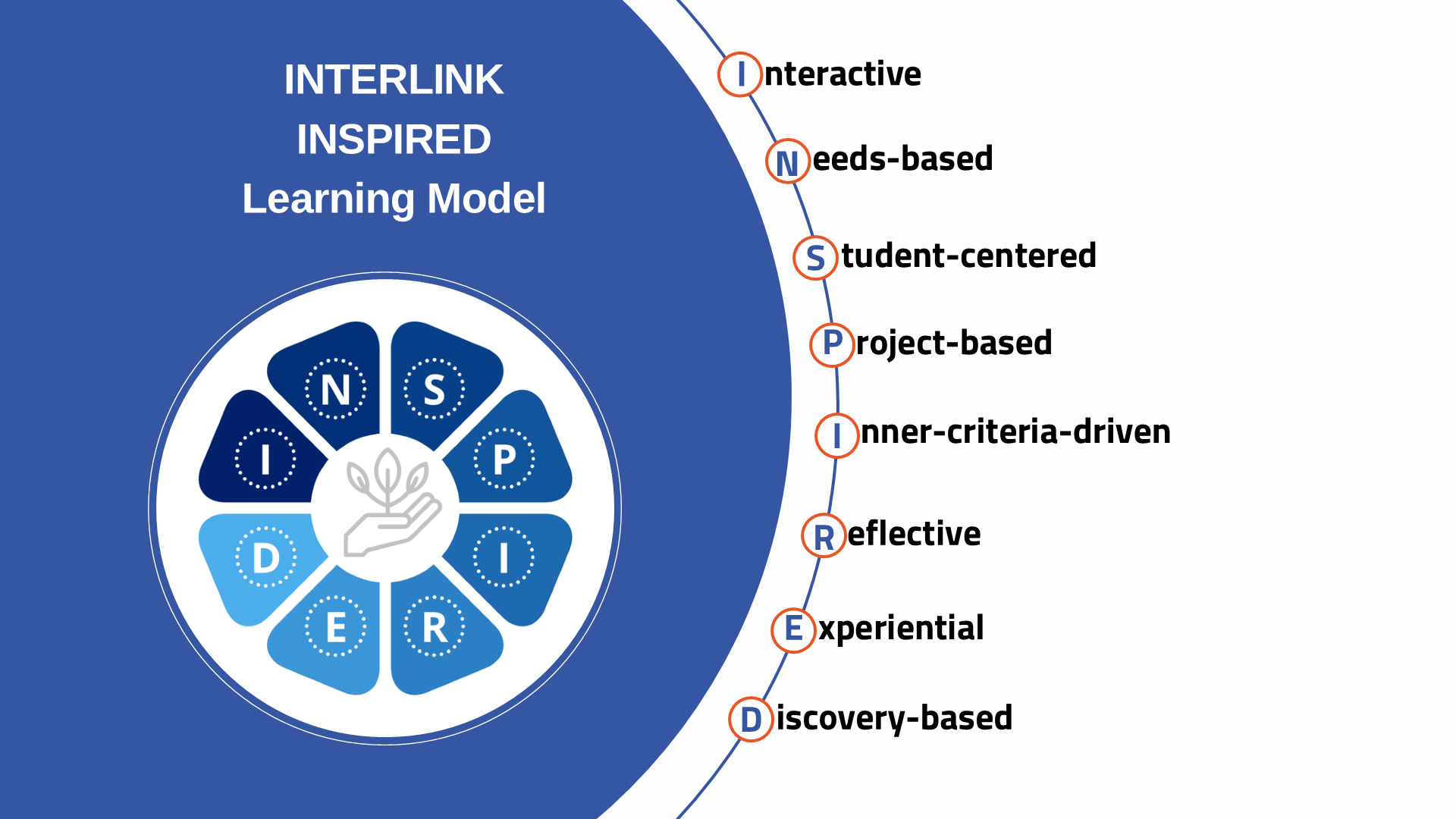Interactive
The need to communicate fuels language learning. Students learn best through interacting with each other in authentic ways.
Interactive
The need to communicate fuels language learning. Students learn best through interacting with each other in authentic ways.

Needs-based
Rather than prescribing specific grammar points or requiring a set vocabulary list for each level, students’ language production indicates to instructors what needs work or practice and thus it becomes the focus for subsequent classes.
Student-centered
Learning takes place when students are allowed to do as much as possible on their own. Student work drives the content of the class. The teacher focuses on the student while the student focuses on the language.
Project-based
A student’s primary role is that of a critical thinker, problem solver, and innovator. Students learn the language as they progress through the stages of the project.

Inner-criteria driven
Through self-awareness and active participation, and with focus on nuances of the language, students develop “inner criteria for correctness,” a set of principles or standards (asking self whether it is right or wrong) through which they judge/conclude about correctness.
Reflective
Reflection helps students to develop skills of self-awareness, analysis, critical thinking and problem solving. It allows learners and teachers to increase their efficiency and success by building on strengths and addressing developmental needs.
Experiential
Students learn by doing! Learning happens when students are using the language. Students learn to write through writing, and to speak through speaking.
Discovery-based
Heuristic or discovery-based learning presents students with opportunities to discover patterns and information from noticing and analysis. Discoveries are documented and become the criteria for student assessment.